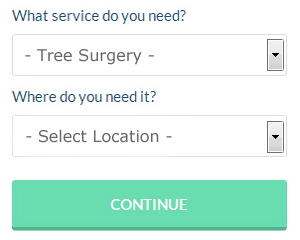Hove Tree Surgeons (BN3): Numerous homes in Hove have gardens that have trees in them. Even though trees are vital for the health of the planet, provide a home for wildlife and are great to look at, they need to be cared for and properly maintained. They can be affected by disease, become overgrown, and in many cases need pruning and other routine maintenance tasks. In windy weather trees can even become hazardous, as branches or even whole sections of tree can snap off and drop to the earth, possibly causing damage to buildings, cars or even passers-by. If you have trees on your property in Hove, it's your responsibility to look after them.
Quite a few do-it-yourself tree care measures are of course possible if you have a hands-on approach, and the upkeep of bushes, smaller trees, hedges and fruit trees, can all be done by a gardening enthusiast. When branches can be reached from the ground, pruning and clipping is a fairly hassle-free process, and if you know what you're doing, are confident and have the correct tools, they can certainly be undertaken. However, the task is best left to the experts if larger trees are involved that call for the use of ladders or climbing.
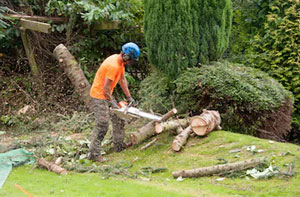
There are various dangers involved with working at height up a tree, and apart from you falling and hurting yourself, you might also drop heavy branches or tools that harm anyone walking or standing underneath. If you visualise yourself teetering precariously up a tree brandishing a powered-up chainsaw or even a sharp handsaw, that ought to be sufficient to put you off the idea for good.
Your thoughts may at first turn to employing a gardener to do the required work on your trees. However this would be a mistake, because most gardeners in Hove don't have the required training and qualifications for work like this, and could even damage your trees, rather than help them. The person who'll have the correct tools, qualifications and equipment for any kind of tree care work, is a tree surgeon. As determined by the trees that you have on your property in Hove, and the extent of the work needed, some specialist equipment might be required including chainsaws, harnesses and chipping machinery.
A proper tree surgeon in Hove should be trained in the use of such tools and machinery and whilst many folks in Hove may claim to be tree surgeons, you'll need to employ one that is thoroughly qualified in arboriculture and holds the following certifications:
- CS31 (NPTC 203) - Fell and process small trees up to 380mm diameter.
- CS38 (NPTC 206/306) - Tree climbing and aerial tree rescue.
- CS30 (NPTC 201/202) - Chainsaw crosscut and maintenance.
- CS39 (NPTC 308) - Aerial cutting of trees using free-fall techniques.
They also need to have some form of basic first-aid qualifications. It's crucial that all professional tree surgery in Hove conforms to British Standards BS3998 (2010) guidelines.
When you are trying to find a good tree surgeon in Hove these are the basic qualifications that you should be interested in. If the so-called 'tree surgeon' you're thinking of using can't confirm that they've got at least some of these qualifications, avoid them and find someone that does. Tree surgeons in Hove with more experience might also hold qualifications in things like countryside management, arboriculture, forest management, woodland conservation & ecology or forestry.

Once fully qualified a tree surgeon in Hove should be capable of undertaking a wide variety of different tree related tasks including such things as stump grinding, transplanting, disease identification, tree removal, tree surgery, pest control, the protection of trees from grazing, tree planting and tree felling.
Certain aspects of these services may be needed by the average householder in Hove, namely; pruning, crown cleaning, crown re-shaping, tree felling/removal, crown raising, crown thinning, storm damage restoration or cabling, which are among the more common tree related projects.
For the safety of the householder, passers-by and themselves, an experienced Hove tree surgeon should be competent in the use of pole saws, harnesses, winches, slackline kits, wood chippers, climbing ropes, chain saws, rigging pulleys, lowering devices, stump grinders, rigging ropes, axes, and other tree surgery equipment. If your so-called 'tree surgeon' arrives on the job with little more than a ladder and a handsaw, the alarm bells should be sounding, and unless you want a bodge job you ought to send them on their way.
Before carrying out any major work on your trees in Hove, you should make sure that none of them have Tree Preservation Orders (TPOs) You local authority is the place to go to determine whether there are TPOs on any of your trees. Any good tree surgeon in Hove will be glad to help you out with this process.
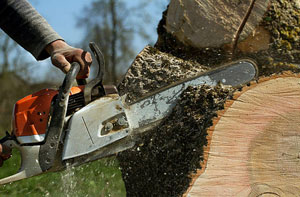
When you've cottoned on to the fact that your trees need the attention of a professional Hove tree surgeon, you can start your search for a good one. There are various ways that you can approach this task. You can search for the websites of local Hove tree surgeons on the net. You could enter your requirements on Rated People, Checkatrade, Bark, or another of the trade portals online. You can flick through your local newspaper classifieds or the Yellow Pages. You can ask friends or neighbours if they know a person they are willing to recommend. This should leave you with several possible options, and a shortlist of potential tree surgeons in the Hove area.
If you would rather stick to the crème de la crème of tree surgeons you should try to find an ARB (Arboricultural Association) approved contractor, who you can trust to be certified in the following disciplines:
- Compliance with regulations for health and safety.
- Compliance with legislative requirements and arboricultural contracting.
- Development and training.
- Operations, knowledge and working standards.
- Customer care and services.
Whatever happens, you must avoid cowboys and rogue traders in Hove, and also be very wary of cold callers who arrive uninvited at your doorstep offering to cut back your trees or clean your driveway. As has already been said, this is a dangerous job and shouldn't be undertaken by anybody who is not fully trained.
Also, your trees are precious things and unless the work is carried out by a competent person they may be irreparably harmed or damaged. If you want to protect the health of your trees, stick with the experts, because lopping, pruning or treating trees at the wrong time of year or in the wrong way can have serious consequences.
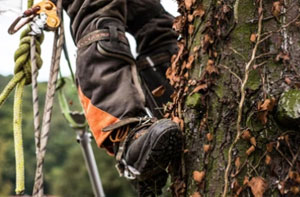
You should always try to get at least 2 or 3 estimates from different local tree surgeons in Hove, to get a range of prices. Getting estimates is simply one step in the whole process of choosing a decent tree surgeon in Hove, there's further research that still needs to be carried out.
Ask lots of relevant questions to get an idea of precisely who you are dealing with. Ensure that they have sufficient insurance, and check what is included in the price. One of the most crucial things that ought to be included in the quote is waste removal. You'll want to know if they are taking away all the waste, branches and logs that they generate.
Getting references from former clients, is another thing that you can do. They will be happy to provide you with references and even some images of work that they've accomplished if they are a reputable company. It may also be illuminating to check out their Facebook page (if they have one), because it is likely to contain some useful hints about the trustworthiness of the company and the clientele it serves.
Locally based Hove tree surgeons are most likely have the postcode BN3 and the dialling code 01273. They will operate in Hove itself, in addition to nearby areas like Falmer, Patcham, Small Dole, Cliveden Close, Portslade-by-the-Sea, Stanmer, Shoreham-by-Sea, Fulking, Fishergate, Upper Beeding, Brighton, Aldrington, Hangleton, Southwick, Portslade, Preston, Mile Oak, Denmark Villas, Pyecombe, Poynings, West Hove, and these postcodes: BN3 1DD, BN3 1AH, BN3 1FJ, BN3 1FA, BN3 1AP, BN3 1PY, BN3 1NE, BN1 5LE, BN3 1JN, BN1 2QA. Checking this out will make sure that you access a local tree surgeon. Hove property owners can benefit from these and many other related services.
For this kind of service it's unquestionably best to hire a trusted tree surgeon. Hove homeowners can substantially benefit from the knowledge and expertise that are the trademark of a trained professional.
Tree Surgery Apprenticeships - Courses - Training Hove

Having employment as a tree surgeon is a rewarding and fulfilling way to make a living. Possibilities like beginning at the bottom (as a groundworker) and working your way up, subscribing to a private course, applying for a college course, being accepted into a tree surgery apprenticeship or taking a course in university are accessible to anybody in Hove hoping to be a tree surgeon. Tree surgery apprenticeships in Hove can be applied for while you're still in school, where they are on offer locally. All over the UK, there are private and college courses in tree surgery, and folks of all age groups can enroll. Several related university courses cover countryside management, woodland ecology & conservation, forestry, forest management and arboriculture, and students with the right qualifications (generally 1 to 3 "A" levels) can go for higher national diplomas, foundation degrees and degrees. If none of the above options get you inspired, it may be possible to get a bit of tree care experience by getting involved in voluntary work for organisations and groups such as the Woodland Trust, the Tree Council, the Forestry Commission or the National Trust. I hope this brief article has proven to be helpful if you came here trying to find info on "how to become a tree surgeon in Hove". You can find out far more information on ways to become a tree surgeon on the National Careers Service website.
Tree Surgery Accidents
As I have already stated, the work that tree care professionals in Hove undertake, involves a significant level of danger. With a high risk of injuries to both operatives, co-workers and passers-by, all reasonable safety measures must be implemented when working on trees.
The vast majority of fatal and major injuries are associated with falls from trees, the use of chainsaws, and being struck by a falling tree or branch, as stated by the HSE. In actual fact, arborists that are involved in tree care work are more at risk of being seriously injured than those working in building and construction.
The majority of accident claims, with regards to insurance, are for falling from ladders, being struck by objects (ropes, branches, trees, grapple hooks, cranes etc) and lifting injuries.
That's why hiring a qualified Hove tree surgeon is so vital when you've got tree work that needs to be carried out. In the tree care industry, most accidents can be attributed to unskilled workers trying to tackle tasks that they aren't trained to do, or capable of. So, always try to use an established and reputable Hove company that has been operating in the area for several years, to avoid this kind of issue.
Invasive Tree Root Problems Hove

You may face problems when certain trees which have particularly aggressive root systems are growing too near to your Hove house. Problems that can develop include damaged foundations, blocked drains and lifting patios. Sycamores, elms, maples and willows, are known to have extremely aggressive root systems.
If you've got plans to plant any new trees on your property, it's best to ensure that they are located a good distance from your sewerage system, patio areas, pathways and your home. If some of these issues are already being caused by established trees which are growing too near to your dwelling, you should call in a tree surgeon in Hove for guidance and advice.
You should not try to deal with this yourself by simply cutting through the invasive roots, because this could significantly affect the tree's health or even kill it. Knowing which roots should be left in place, and which roots can be safely cut back is the realm of the specialist, and a qualified Hove tree surgeon will make certain the tree is still able to get adequate food and water to successfully survive for many years to come.
Because sewage pipes provide a continuous source of moisture and nutrients, shrub and tree roots often cause structural issues in subterranean drainage systems. The joints of a drainage system can soon be invaded by tiny roots, which when established can develop into sizeable root balls and ultimately cause joint failure and blockages. Through the use of high pressure jetting, manual rodding or electro-mechanical equipment, many Hove tree surgeons will offer professional root removal solutions. You can also obtain root removal services in Falmer, Patcham, Small Dole, Cliveden Close, Portslade-by-the-Sea, Stanmer, Shoreham-by-Sea, Fulking, Fishergate, Upper Beeding, Brighton, Aldrington, Hangleton, Southwick, Portslade, Preston, Mile Oak, Denmark Villas, Pyecombe, Poynings, West Hove, and and of course in Hove.
Conservation Areas & Tree Preservation Orders Hove
You must make certain there is no Tree Preservation Order (TPO) on your trees in Hove, before you undertake any major work on them. You must talk to your local authority to find out if any of the trees within the boundary of your property are subject to Tree Preservation Orders. If there are TPOs on one or more of your trees, you will need local authority consent (in writing) to do any of these: wilful damage, uprooting, topping, removal, wilful destruction, lopping or felling. Ask your tree surgeon if you're anxious about this - they will be able to check this out for you.
Also, if you plan to undertake any work on a tree with a diameter of seventy five millimetres or more (1.5m from the ground), and you live within a conservation area in Hove, you must give your local council a minimum of 6 weeks written notice of the work. (Tags: Tree Preservation Orders Hove, TPOs Hove, TPOs (Tree Preservation Orders) Hove).
Woodland Clearance Hove
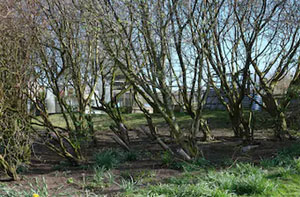
Woodland clearance in the Hove area should only be carried out after the appropriate restrictions and regulations have been established and observed. Hiring the services of a competent Hove tree surgeon for your woodland clearance project, will see them following applicable protection orders and covenants, apply for any required permits, and using eco-friendly methods in clearing the area.
A detailed site survey will be conducted by the tree surgeon who'll also collaborate with woodland authorities and organisations to make sure that your woodland clearance is undertaken legally and safely. If it is discovered that protected plant or animal life is in the area to be cleared, it is necessary to move these flora and fauna, if approval is given by the appropriate authorities.
The highly specialized and extremely expensive equipment used in woodland clearances, means that it's far more cost effective to call on a certified tree surgeon to take care of your clearance project. (Tags: Woodland Clearance Hove, Woodland Management Hove, Woodland Preservation Hove, Woodland Clearances Hove).
Preventing Storm Damage
Of all the things that grow in our garden, trees give the impression of being the sturdiest, strongest and the most able to stand up to the vicissitudes of Mother Nature. In actual fact some types of trees can live and continue to grow for many hundreds of years.
Having said that, trees can be extremely susceptible to the elements when facing certain conditions, and it is not simply the risk of falling tree limbs and branches, but in times of extreme weather the entire tree can fall down. The principal weather related issue for trees is high winds, and as the number of violent storms and weather events in Hove escalates because of climate change, this type of damage is becoming more and more commonplace. Flooding or prolonged periods of rain will cause soil to become waterlogged, which is another issue for larger trees, as is heavy snow during wintertime.
To prune and remove any dead, dying or excessively long branches that may cause an issue in times of severe weather, it's a good idea to get a competent Hove tree surgeon to check out your trees regularly.
Taller trees can also be fitted with lightning rods, copper conductors, or other protection systems, to stop them being struck by lightning and to prevent surrounding buildings and property being affected by jumps or "arcs" from one conductive path to another. A tree can be killed or seriously weakened by a lightning strike, and even if the effect isn't instantly recognisable, the tree will likely be more vulnerable to attacks by disease and pests. While you may not imagine that lightning is all that common in Hove, each year something like 300 thousand strikes occur throughout the United Kingdom.
To protect your trees from being damaged by storms and lower the chances of major consequences should an unsound tree topple over as a result of extreme weather, ask your local Hove tree surgery firm what can be done. (Tags: Storm Damaged Trees Hove, Storm Damage Hove, Storm Damage Prevention Hove).
Crown Thinning Hove
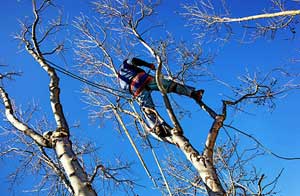
Taking out smaller live branches located on the outer area of the tree's crown, though not changing the size or shape of the tree, is referred to as crown thinning. This course of action is intended to develop a uniform density of leaves, which accomplishes certain aims such as: to prevent the tree being uprooted in blustery weather, to reduce the weight of the crown, to decrease the tree's wind resistance, to alleviate the stress upon particular branches resulting from ice, snow, gravity, or wind or to permit more sunlight throughout. A uniform foliage density around consistently spaced branches should be the objective of crown thinning, it should not alter the all round size and structure of the tree. (Tags: Crown Thin Hove, Crown Thinning Hove, Tree Crown Thinning Hove)
Tree Emergencies Hove
Having to call out a tree surgeon in an emergency isn't an occurrence that's liable to happen all that often, but if you've got trees growing in your garden in Hove, this might be a requirement at some point. When there are storms and high winds, Hove tree surgeons experience an increase in emergency call-outs, and most of them offer a 24/7 service. In stormy weather there's more potential for branches breaking off and falling, and even possibly the risk of a whole tree toppling over. When tree limbs and branches start to fall busted garden furniture, squashed sheds, damaged fences and smashed greenhouses are a common outcome, therefore avoidance is better than having to deal with the consequences.
Emergency tree surgery services will also frequently be needed by the local council in the Hove area, as substantial branches can break off and drop onto roads, public paths and railway tracks, necessitating prompt attention.
There might be a need for "re-balancing" a tree, even after emergency work has been successfully accomplished, because because of the loss of some branches, there may be a weight distribution problem, which could be unsafe but also displeasing aesthetically. If you are experiencing any of these tree related problems, you should not attempt to tackle any of them by yourself, and you should immediately get in touch with a local tree surgeon in Hove who provides emergency tree care services, so that they can advise on the preferred strategy.
Everyday Duties of a Tree Surgeon
- Chip and cut logs and branches.
- Climb trees to prune or remove branches.
- Prepare telephone or on-site quotes with the customers.
- Produce tree survey reports for commercial and domestic customers.
- Assess the health of trees and create plan of action.
- Be proficient with power tools and other powered equipment.
- Tidy site upon completion and remove waste from customer's site.
- Fell and remove trees and grind stumps.
- Tree planting and transplanting.
- Identify hazards posed by trees.
- Deal with clients and complete admin duties.
- Maintain and service equipment like chainsaws and wood chippers.
Dead-Wooding Hove
Dead-wooding (or deadwooding) is a fundamental element of tree management, and all experienced Hove tree surgeons will carry out this procedure where needed. Calling for the careful removal or dying and dead branches which could present a hazard to vehicles, buildings or pedestrians, dead-wooding can help make a tree both safer and healthier. The most typical reasons for the branches of a tree dying are pest attacks, heavy shading, a damaged root system or disease, and this is of course a natural process.
The rationale for dead-wooding is normally one of safety, however, it is also sometimes done for the benefit of the tree or purely to make it look more appealing. It is possible to dramatically improve the health of a tree by eliminating dead, damaged and dying branches, an excessive amount of which will attract insect infestations and the spread of disease. Trees with a lot of dead wood also look unattractive, so to improve its appearance, this should all be cut off.
In most instances only the largest dead branches will be cut out, as small ones pose very little risk. Having said that, any dead branches that are in excess of 50 millimetres in diameter may need to be removed in locations where a tree hangs over a property, a public space, a park, a garden or a road in Hove. (Tags: Deadwooding Hove, Dead-Wooding Trees Hove, Deadwooding Services Hove, Dead-Wooding Hove).
Skills and Knowledge Required by Tree Surgeons in Hove
- Physical skills like movement and co-ordination.
- Be alert to the dangers and complexities involved with the various areas of tree work.
- Have the ability to maintain, use and repair tools and machinery.
- Be professional and able to complete tasks within a given period.
- To be able to undertake basic tasks on a hand-held device or computer.
- Patience and the ability to stay focused in times of stress.
- Have the ability to work well with your hands.
- Decent customer skills.
- Have the ability to work well with other folks.
- Have a systematic and methodical working approach.
- Have a good understanding of public safety and security.
Removal of Tree Stumps Hove
When you have a tree cut down from your property in Hove, unless previously arranged with your tree surgeon, you'll be left with a stump to contend with. You might consider leaving it to rot and break down naturally, and be perfectly happy to leave it to its own devices. However, a large tree stump could take a number of years to rot down, and could even send out new suckers in an attempt to restore itself to its former glory. Protruding stumps can also be an eyesore, be a trip hazard, and can attract undesirable pests.
There are several ways by which a tree stump can be removed, if you determine that this is the best course of action, though the two main alternatives are stump grinding or stump removal. In the following paragraphs we'll be considering the stump removal alternative as opposed to stump grinding.
Chemical treatment, burning and digging out by hand, are the three main techniques for getting rid of a tree stump. If you want to tackle a stump on your own, you can employ any of these strategies. If you are intending to bring in a tree surgeon to undertake the work, they are usually going to favour the previously mentioned stump grinding solution, although a chemically based treatment such as eco-plugging may also be suggested.
Chemical Stump Removers: Chemical treatment involves the use of a powerful chemical such as Roundup Tree Stump Remover, Vitax SBK Stump Killer or Resolva Xtra Tough Tree Stump Killer. Wear gloves and avoid skin contact when using these chemical solutions, and also avoid inhaling. You must stick rigidly to the maker's directions, for quantities, applications and timings. This should be seen as a long term stump removal solution, as it may take a few weeks or even months to rot away, subject to the size of the stump. It will still have to be chopped up and removed with an axe and a spade once it has rotted completely.
Tree Stump Removal by Burning: As it can be quite dangerous and may conflict with local legislation, stump burning is not really recommended, so if you choose this method, be careful. It comprises drilling some 25mm holes in the stump and constantly filling the holes with vegetable oil for a few days. Charcoal is then piled around the tree stump and set alight. This should not then be left to its own devices, and be continually monitored. Once the stump has finished burning, make sure the fire is fully extinguished, leave it to cool down and then dig out the stump remains and roots.
This is not the only way to burn a tree stump, you could also try shoveling out all the soil from underneath the stump and setting a fire in the space that has been made beneath. If the stump is in close proximity to buildings, other trees or fences, you shouldn't ever use any of these stump burning methods.
Hand Stump Digging: Digging up a stump by hand calls for a few tools such as a pointed spade, a handsaw, loppers and a chainsaw. It entails digging down to expose the roots, cutting the roots with a saw or loppers, and eventually releasing the stump, or making it easier to lift out. The use of a cable ratchet winch may be necessary for the final lifting out and removal of the stump. This type of work is not for the unfit or faint-hearted, because it's exhausting and tedious.
Pollarding Hove
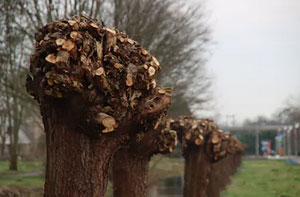
When a tree has significantly grown too large for its present setting, it must be considerably reduced in size through a procedure labeled as "pollarding". This approach is from time to time used for aesthetic reasons to transform a tree into a particularly pleasing form or shape. It is frequently noticed on trees that function as borders or hedgerows, and also trees which grow alongside streets in Hove. Because pollarded trees have such a stark and naked visual appearance, and will probably never get back to their earlier shape, this course of action isn't usually popular with those who appreciate trees. Tree species like sycamores, maples, limes, oaks, beeches, horse chestnuts and planes are typical candidates for the pollarding process, and on the positive element trees that may normally have to be felled can be conserved for the enjoyment of everybody.
The International Society of Arboriculture (ISA)
The International Society of Arboriculture (ISA) is an international, non-profit organisation which is based in Atlanta, United States, fostering the awareness and benefits of trees. Cultivating the professional practice of arboriculture, the ISA is a membership association that serves the tree care industry all around the world.
With its focus firmly on education, technology and research, the ISA encourages best tree care practice by way of educational services, publications and events, allowing individuals in the tree care industry to fully develop their knowledge, skills and arboricultural expertise.
After signing an agreement with them the Arboricultural Association was accepted as an associate organisation of the ISA in 2016. The relationship between the two associations was consequently strengthened, and further opportunities opened up for Great Britain and Ireland ISA members. UK members of the Arboricultural Association are now able to reap the benefits of being an integral part of an international tree care network. The International Society of Arboriculture now has over 22000 members worldwide with professional affiliates and associate organisations in EXTRAhedge laying, health assessments, felling of storm damaged trees Hove, crown removal Hove, tree planning, tree work in Hove, cut sealing Hove, stump removal, hazard assessments in Hove, vegetation management, shrub maintenance in Hove, the removal of dead wood in Hove, tree care, tree felling, commercial tree surgery in Hove, tree reduction, crown cleaning, site clearance, tree watering, hedge reduction, stump treatment, formative pruning in Hove, crown raising in Hove, tree transplanting, hedge lowering Hove, tree removal, stump grinding Hove, root flare exposure, tree dismantling, tree management Hove, forestry management, crown lifting in Hove, cable bracing, air spading in Hove, tree fertilising in HoveTEN, and the United Kingdom.
Tree Transplanting Hove
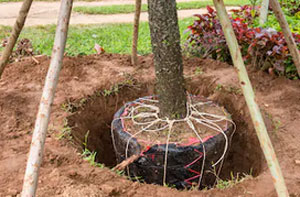
Re-planting fully-grown trees is a delicate, but rather straightforward process, due mainly to cutting-edge tractor mounted tree spades, tree lifting equipment and other specialist machinery. Removing a tree from your land no longer means you have to resort to cutting it down and excavating the roots; an experienced tree removal contractor in Hove can remove and transplant even fully-grown trees and repair the disturbed ground afterwards.
Moving a tree in Hove causes less stress to the roots and health of the tree in winter and autumn seasons, but it can still be conducted during the warmer months by comprehensively soaking the ground before removal. Removing a mature tree involves a mechanical tree spade burrowing down and encompassing the tree's root ball, before raising the whole tree, unharmed, from the ground. If the tree is not to be immediately replanted, it can be stored temporarily as long as its root ball and surrounding earth is kept moist.
A specialist tree transplanting business in Hove will communicate with local authorities to ensure that preservation orders and local regulations are observed throughout the tree lifting and transplantation process.
Wood Chipping Hove

As large volumes of tree limbs, vegetation and branches result from the tree surgery process, the majority of Hove tree surgeons will use wood chipping machinery to reduce this material into manageable pieces. Rapidly gobbling up as much as 40 tons of material every hour, these powerful wood chipping systems can handle just about as much as you're physically able to feed into them. Even the smaller, more commonly used devices can process a respectable five tons each hour without causing any problems.
Chopped down timber is naturally a good deal easier to transport, taking up much less space in the tree surgeon's wagon or trailer, and can additionally be used for cultivating mushrooms, weed prevention, ecosystem restoration, garden walkways, mulch for gardens, landscaping, wood pulp and biomass fuel, to name just a few.
Generally, tree surgeons in Hove will cart away all the wood chippings that result from your tree surgery, unless of course you want them for one of the previously mentioned uses, in which case they will usually be delighted to let you keep some or all of them. Tree surgeons are a good source for wood chippings which you can use for various purposes throughout your garden, even if you do not require any tree surgery work doing on your property in Hove. Certain tree surgeons will want paying for wood chippings, particularly if you want them delivered, others will let you have them at no cost.
Wood chipping machinery is made by a number of companies, some of the most recognised makes include Hyundai, Forst, Timberwolf and Forest Master.
Ash Dieback (Hymenoscyphus Fraxineus)
Likely to decimate close to 80% of the current British ash trees, over the coming years, ash dieback is a deadly fungal disease of ash trees, the first case of which was reported in the United Kingdom in 2012. Following the Dutch Elm Disease tragedy, which killed off Britain's elm trees, ash dieback is almost certain to have huge repercussions for our countryside.
The Fraxinus genus of trees is affected by this damaging disease, which has an especially devastating effect on the common ash (Fraxinus excelsior), which is the most widespread species in the UK. Originally coming from eastern Asia where the native Chinese ash (Fraxinus chinensis) and Manchurian ash (Fraxinus mandshurica) are less susceptible to it, the fungus which causes the disease is called Hymenoscyphus fraxineus (H. fraxineus), and it kills the tree by blocking its vascular systems.
Rapidly spread by minute spores produced by the fruiting bodies of the fungus, and are able to travel on the wind for tens of miles, ash dieback (or chalara ash dieback) can be found in most regions of Great Britain with up to 85 percent mortality rates.
The obvious symptoms of ash dieback are:
- Wilting leaves that turn black in colour and are shed early.
- Dying leaves and shoots that are visible during the summertime.
- Dark brown necrotic lesions form where limbs meet the trunk, and the inner bark under the lesions looks brownish grey.
- New epicormic growth appears from previously dormant buds (common in trees under stress).
- Dark patches on leaves during mid to late summer.
To some extent, ash trees have the ability to fend off the infection, but they ultimately die after continued attacks year-on-year. There is not yet any cure for ash dieback, and as it is an airborne disease, no clear way to stop it spreading.
Although you can report cases of ash dieback to the Forestry Commission's "Tree Alert Service", it's so prevalent throughout the British Isles that they're really only interested in hearing about cases which are discovered in locations not affected previously. If you suspect that you have a case of ash dieback on your property in Hove, you should still contact a local tree surgeon, who will offer guidance about how to proceed - ultimately the tree or trees will have to be chopped down and removed.
(Tags: Chalara Ash Dieback Hove, Ash Dieback Signs, Identifying Ash Dieback).Tree Cable Bracing Hove
Cable bracing is a procedure that's used to give support to a tree when it shows signs of damage, decay, or presents a risk to nearby property. Cable bracing is generally used on older or specimen trees in Hove where it is undesirable to chop down the tree or remove large unstable portions.
The fitting of a cable bracing setup may be possible to add support to the V-shaped forks, defective joints and weak limbs of a vulnerable tree. To help redistribute structural tension and prolong the lifespan of old and valuable trees most Hove tree surgeons should be able to undertake different forms of bracing work by the installation of cables and rods.
A non-invasive procedure, that doesn't cause damage to the tree by drilling and bolting the troublesome branches, cable bracing provides flexible and shock-absorbing support. A risk assessment must be conducted by a tree surgeon or arborist before any actual work can commence. This is important to ensure the safety of the tree and encircling areas as the work proceeds.
Safe Tree Surgery

Tree surgery can definitely be a dangerous and risky process if done incorrectly, for this reason one of the main worries is the health and safety issue. Inexperienced or untrained "tree surgeons" in Hove are likely to cut corners and just ignore recognised safety guidelines, with the result that there could be no head protection, not using eye or hearing protection, not roping off the area to protect vehicles and pedestrians, failure to use cut-proof (chainsaw-proof) apparel (especially trousers and safety boots), hardly any protection from falling, in the shape of ropes, platforms and harnesses and falling branches and timber. Due to such inadequacies, possibly at risk are the actual tree, facilities on the street, passing and stationary vehicles, garden features and fences, the property owners family, team members working on the ground, passers by, nearby properties, the tree surgeon (person in the tree).
Tree Removal Hove

If your tree is in the way of new construction project, your tree has been uprooted, your tree is diseased/infected, you have a dead/dying tree, your tree has grown too large for its environment, the tree presents a safety hazard or the roots are damaging retaining walls/foundations, then you've likely got a genuine basis for tree removal. Otherwise tree removal should be the final resort, given that trees are for the most part a beautiful and beneficial presence in your garden. Quite a few individuals in Hove are hoping to get rid of a tree or trees to get a more pleasing view or even to reduce the inconvenience of leaves in winter time, this is by no means necessary and should really only be done if the problem is severe.
Tree Surgery Tasks Hove

Hove tree surgeons can normally help with hedge laying, health assessments, felling of storm damaged trees Hove, crown removal Hove, tree planning, tree work in Hove, cut sealing Hove, stump removal, hazard assessments in Hove, vegetation management, shrub maintenance in Hove, the removal of dead wood in Hove, tree care, tree felling, commercial tree surgery in Hove, tree reduction, crown cleaning, site clearance, tree watering, hedge reduction, stump treatment, formative pruning in Hove, crown raising in Hove, tree transplanting, hedge lowering Hove, tree removal, stump grinding Hove, root flare exposure, tree dismantling, tree management Hove, forestry management, crown lifting in Hove, cable bracing, air spading in Hove, tree fertilising in Hove and other tree surgeon services in Hove, East Sussex. These are just an example of the activities that are handled by a tree surgeon. Hove professionals will be happy to inform you of their entire range of services.
Tree Surgeons Near Hove: Also find: Cliveden Close tree surgeons, Patcham tree surgeons, Aldrington tree surgeons, Fishergate tree surgeons, Brighton tree surgeons, Stanmer tree surgeons, Pyecombe tree surgeons, Portslade tree surgeons, Poynings tree surgeons, Southwick tree surgeons, Portslade-by-the-Sea tree surgeons, Upper Beeding tree surgeons, Falmer tree surgeons, Denmark Villas tree surgeons, West Hove tree surgeons, Hangleton tree surgeons, Small Dole tree surgeons, Preston tree surgeons, Mile Oak tree surgeons, Shoreham-by-Sea tree surgeons, Fulking here. All of these locations are covered by an experienced tree surgeon. Hove homeowners can get tree surgery quotes by going here.
How to Find a Tree Surgeon
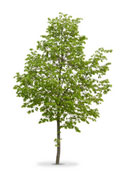
A few years back most people used Yellow Pages or local newspapers to search for nearby businesses, although the modern equivalent appears to be using directories on the web such as Thomson Local, Touch Local, Mister What, Yell, Yelp, Local Life, Cyclex, 118 118 and City Visitor, naturally such directories don't all give reviews, which means you do not always get any idea of any particular tree surgeons working standards. Trade portals are an additional way that you'll be able to to search for a reliable tree surgeon, check out Checkatrade, TrustaTrader, My Builder, Local Heroes, Rated People or My Hammer, and the ideal thing about these trade portals is you're able to read testimonials and reviews by former customers with regards to the tree surgeons and their working standards. Last but not least, you should ask family members, workmates and neighbours to suggest a tree surgeon they have previously used.
Tree Care Services Hove
- Hove Crown Reduction
- Hove Stump Treatment
- Hove Arboriculture
- Hove Crown Thinning
- Hove Crown Removal
- Hove Tree Inspections
- Hove Tree Reduction
- Hove Tree Removal
- Hove Tree Pollarding
- Hove Stump Grinding
- Hove Tree Surveys
- Hove Tree Maintenance
- Hove Woodland Management
- Hove Cable Bracing
More Hove Trades: Not surprisingly, whenever you happen to be having tree care carried out in Hove, East Sussex, you'll probably need other garden related services, and together with a tree surgeon in Hove, East Sussex, you may also need garden designers in Hove, garden wall construction in Hove, artificial grass installers in Hove, grass cutting services in Hove, fence builders in Hove, garden shed installers in Hove, garden clearances in Hove, landscaping services in Hove, local SKIP HIRE in Hove, weeding in Hove, decking specialists in Hove, rubbish removal in Hove, hedge shaping in Hove, pond maintenance in Hove, patio installers in Hove, driveway specialists in Hove, and other different Hove tradespeople.
Tree Surgeons Around Hove: People living in these Hove streets recently needed a tree surgeon: Stonecroft Close, Byron Street, Boundary Road, Barrowfield Drive, Storrington Close, Shakespeare Street, St Keyna Avenue, Dale View Gardens, The Upper Drive, Adelaide Crescent, St Aubyns Gardens, Tudor Close, Berriedale Avenue, The Down, Donkey Mews, St Leonards Avenue, Chatsworth Road, St Philips Mews, Downland Drive, Alice Street, Caisters Close, Salisbury Road, Summerdale Road, Chalfont Drive, Brooker Street, Sherbourne Road, Brunswick Mews, Brunswick Place, Tandridge Road, and also in these postcodes BN3 1DD, BN3 1AH, BN3 1FJ, BN3 1FA, BN3 1AP, BN3 1PY, BN3 1NE, BN1 5LE, BN3 1JN, BN1 2QA. Work was achieved in these places by a local tree surgeon. Hove property owners were given competent and top quality tree surgery services on each occasion.
 Tree Surgeon Hove
Tree Surgeon Hove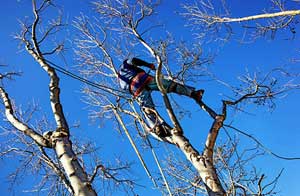 Tree Care Hove
Tree Care Hove Tree Surgery Hove
Tree Surgery HoveMore East Sussex Tree Surgeons: East Sussex tree surgeons: Uckfield, Newhaven, Ore, Hove, Forest Row, Hastings, Hailsham, Rye, Westham, Willingdon, Wadhurst, Ringmer, Polegate, Heathfield, Seaford, Bexhill-on-Sea, Peacehaven, Battle, Portslade, Lewes, Crowborough, Brighton, Telscombe and Eastbourne.
To obtain local Hove info go here
Tree Surgery BN3 area, telephone code 01273.
More Trades: Gate Fitters - Gutter Cleaning - Tilers - Carpet Fitters - Carpenters
01273 - Arboriculturalist Hove - Tree Management Hove - Tree Felling Hove - Tree Reshaping Hove - BN3 - Woodland Management Hove - Tree Surgeon Hove - Crown Lifting Hove




